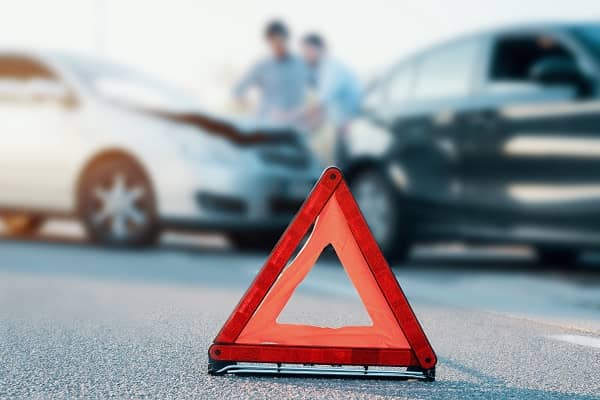Car accidents occur every day all over America’s roadways. If you can go for many years without causing one or getting in one, that’s great. You may say that you are always a safe driver, and perhaps that’s true, but you can always encounter a poor driver or someone who makes a mistake at an inopportune moment.
Over 6 million US car accidents happen yearly, and you should avoid them if you can. If you know how they take place, that can sometimes help.
We will discuss some common car accident varieties right now. We’ll also go over how you can usually avoid them.
The Sideswipe Collision
The sideswipe collision usually occurs when a car tries changing lanes without signaling. If you signal before changing lanes, that tells the other drivers in your lane and the one beside you where you’re going.
These accidents can also happen if one driver signals, indicating they’re changing lanes, but the other driver does not let them in. Instead, they accelerate and box the other driver out.
You can avoid these accidents in a couple of different ways. First, you can use your turn signal. You should never change lanes without using it, even if you think there’s no one around you.
You can also use blind spot detection alerts if your car has them. Newer-model vehicles do. Blind spot detection sounds an alert or has a light that blinks when the vehicle detects another car or some other large object beside you. You should always check your blind spot before changing lanes, but you can also use this relatively new technology.
You can do one additional thing when avoiding sideswipe collisions. You can use defensive driving. In this context, that means letting someone into the lane ahead of you if they signal that they’re changing lanes.
It does no harm letting someone go ahead of you. If you get aggressive and speed up without allowing the other car into your lane, you caused the accident, not them.
The Left Turn Accident
Some drivers cause accidents when they’re in an intersection and they’re in the left-hand turning lane. Coming from the other direction, there’s a car likewise waiting to make a left turn.
If you try turning left before you can see past the car blocking your vision, then you might not clear the intersection before a vehicle coming from the opposite direction hits you. This is a classic driving mistake.
If you can’t see the other lane because the other car turning left obstructs your vision, you made an unsafe turn. If another car coming straight from the other direction hits you, that’s your fault.
These actions sometimes cause head-to-head collisions, or they can cause T-bone collisions as well. That depends on whether you mostly cleared the intersection before the other car hit you or whether you were still squarely in the middle of the intersection when the collision occurred.
To avoid these accidents, don’t make that left-hand turn until you can see past the car that’s turning left across from you. Usually, in these intersections, you get a green arrow indicating when you should turn left.
Use that arrow. If you try turning left without the arrow and with a car turning left coming from the opposite direction, which blocks your vision, you can cause an accident.
The Fender Bender
Fender benders occur when a vehicle hits another car ahead of it. The rear car’s front bumper strikes the vehicle’s rear bumper ahead.
This usually happens if the leading driver brakes suddenly. It can also occur if the rear driver isn’t paying attention.
To avoid these accidents, don’t tailgate the vehicle ahead of you. Maintain a safe distance, usually at least one car’s length, between your front bumper and the leading vehicle’s rear bumper.
You can also not let anything distract you while you’re driving. If you look at your smartphone while driving, and the car ahead stops suddenly, that can cause an accident. You should also not let your kids in the backseat distract you, or the burger you just got at the drive-through, or anything else along those lines.
The T-Bone Accident
We’ve mentioned how unsafe left turns can cause T-bone accidents. You can also cause one if you try running a red light or making it through an intersection with the light changing from yellow to red.
Running through red lights can cause devastating accidents. Often, aggressive driving, drugs, or alcohol play a part.
Most people know they should stop at yellow lights rather than speeding up, and that can avoid many T-bone collisions. Stopping at yellow lights and avoiding those deadly, unsafe left-hand turns can usually prevent these accidents.
The Head-to-Head Collision
When cars hit head-to-head, that might happen with unsafe left turns. You might also have a confused or drunk driver that tries getting onto a highway exit ramp that is one-way. If you don’t know the area, you have ingested alcohol or drugs, or you’re driving recklessly for some other reason, you can cause a head-to-head collision if you encounter a car coming from the other direction.
You can also hit a car head-to-head if you’re driving the wrong way down a one-way residential street.
Again, this usually happens if you’ve ingested alcohol or drugs. Maybe you also don’t know the area, and you miss the one-way sign. Perhaps you’re an inexperienced driver, and you let the street’s layout confuse you.
If you pay attention and don’t ingest drugs or alcohol, you should avoid most head-to-head accidents. Learn the roads and highways around you and know which ones have one-way signs posted.
If you avoid these driving behaviors, you can usually prevent these accident types. Safe driving means cautious driving. If you drive defensively, you can often stay safe.
Watch out when you’re on the roads as well. Look at other drivers, and if you see someone acting erratically, try keeping a safe distance.


